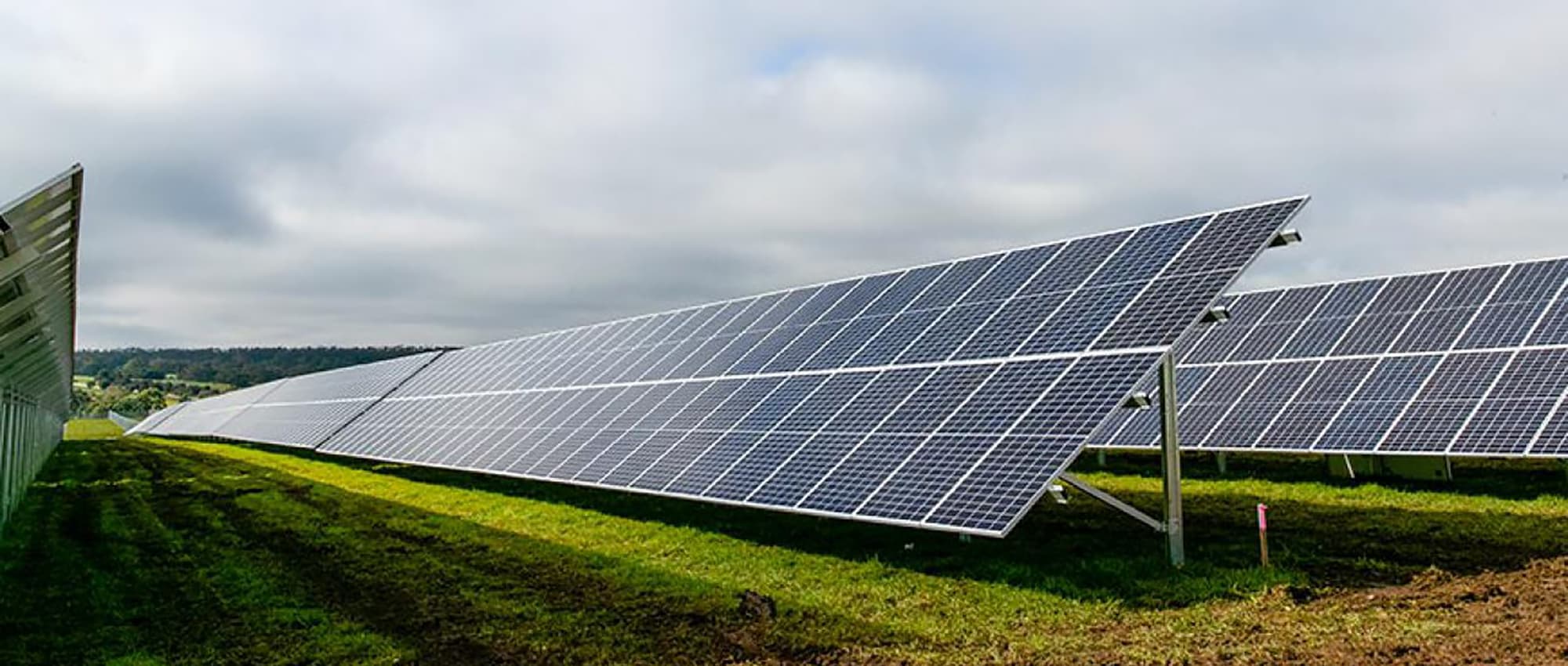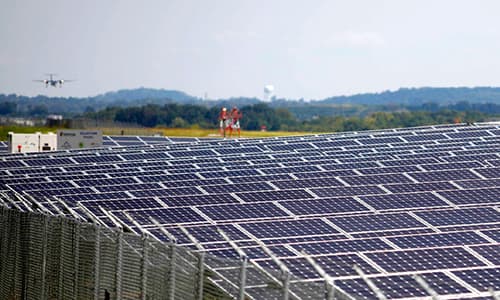Largest solar project of its kind supporting Melbourne Airport’s transition to net zero operations and long-term sustainability

Managing portfolio companies through the transition to a net zero economy is front of mind for infrastructure owners and operators right now. Spurred by the rapid shift in capital markets towards decarbonisation, scores of practical initiatives are being implemented across the infrastructure sector. As this happens one thing is clear, a successful transition requires ambition and good planning in equal measure.
Since 2017, we have been working with portfolio companies to mitigate climate risks, as well as identify opportunities in a decarbonising economy that help to create operational efficiencies, add value and reduce our carbon footprint.
Melbourne airport’s 12 megawatt (MW) solar farm is one example of a renewable energy project that aims to drive operational, cost-saving and environmental benefits for decades to come.
Thinking big
The solar farm extends across 19 hectares (47 acres), which is an area equivalent to the size of 26 soccer fields, making it the largest behind the meter solar farm at any Australian airport. The facility is capable of generating 17 Gigawatt hours of renewable energy each year, which is equivalent to the amount of energy required to power approximately 3,600 homes.1
Construction of the AU$25 million project commenced in December 2019 and continued through 2020. Melbourne Airport and its shareholders supported the continuation of construction during the COVID-19 pandemic. They identified the project as an opportunity to continue taking steps to decarbonise operations to prepare for a cleaner and more cost effective sustainable energy future.
The facility began operating at 100% output in late January 2021. It is expected to generate up to 15% of the airport’s annual electricity consumption, which is enough to power all four passenger terminals.
At full output, the renewable energy generated will prevent as much as 15,300 metric tonnes of CO2e entering the atmosphere2. This volume of greenhouse gas emissions is equivalent to the volume produced by 3,300 passenger vehicles in a year.3

Good planning
The airport carefully considered and managed numerous potential impacts of the project and the development work. These included the size of the parcel of land required for the solar panels, its proximity to the airport and potential glare from solar panels. Airport management recognised the importance of the development site to locals and visitors as a popular viewing area for observing planes as they take off and land, and ensured the area was re-opened once the project was completed.
The solar farm is just one chapter in the airport’s strategy to reduce its carbon footprint. Environmentally, the airport is committed to growing in a sustainable way that not only benefits the operation, but also the airport community. Simon Gandy, APAC’s Chief of Infrastructure, said the airport will continue to review and invest in energy solutions that aim to deliver sustainable outcomes and provide resilience to our airport operations.
“We are focused on playing our part to reduce carbon emissions. By adding this 12MW farm we’re able to produce enough renewable energy to power all four passenger terminals. We are also looking to incorporate solar into all our new developments on the estate. An example of this is the 2MW solar array installed atop one of the airport’s tenant warehouses, Agility Logistics, in 2020,” said Mr Gandy.
IFM will continue to work with co-shareholders and the management teams of our portfolio companies to support programs and initiatives that aim to mitigate climate risk and harness opportunities in a decarbonising economy.
Investments in these projects are a significant element of our commitment to reduce greenhouse gas emissions across our asset classes, targeting net zero by 2050.
We believe our approach is in the financial interests of our investors, and absolutely necessary if we are to continue delivering on our purpose, which is to protect and grow the long-term retirement savings of working people.
2 IFM Investors calculations
3 https://www.epa.gov/energy/greenhouse-gas-equivalencies-calculator
